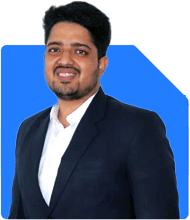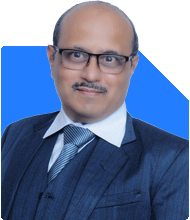Omkeshwar Singh | Answer |Ask -Follow
Head, Rank MF - Answered on Nov 06, 2020

I am 40 Yr old and investing 10k each in below MF from last 2 yrs. My target is to build corpus of 50L for kids education by 2026 and 2.5 - 3.0 cr retirement corpus by 2035. Suggest if i need to make changes. My monthly expense now is ~70K /month. Is the 3Cr corpus for retirement is good? Invesco India Tax Plan - Gr Kotak Emerging Equity Fund - Gr Axis Multicap Fund - Gr Axis Small Cap Fund - Gr Invesco India Growth Opportunities Fund - Gr Kotak Equity Opportunities Fund - Gr
| Invesco India Tax Plan - Gr | ||||
| Kotak Emerging Equity Fund - Gr | ||||
|
For Large & Mid Cap Kotak is fine and Uti Equity Fund-growth Plan-growth OR Parag Parikh Long Term Equity Fund- Regular Plan Growth can be considered instead of Invesco India Growth Opportunities Fund – Gr
With 60,000 Monthly SIP, Required corpus for the Kid's Education can built in 8 years / 2026
For Retirement also the required corpus can be built with these monthly SIP by 2035
Investment of this retirement corpus in 2035 in three Debt and 1 Hybrid Balanced with a SWP 1,70,000 / PM will provide perpetually adjusted for inflation than for nearly 20 years post retirement.
You may like to see similar questions and answers below
Nikunj Saraf | Answer |Ask -Follow
Mutual Funds Expert - Answered on May 24, 2023
Ramalingam Kalirajan |10870 Answers |Ask -Follow
Mutual Funds, Financial Planning Expert - Answered on May 15, 2024
Ramalingam Kalirajan |10870 Answers |Ask -Follow
Mutual Funds, Financial Planning Expert - Answered on Jul 18, 2024
Nitin Narkhede | Answer |Ask -Follow
MF, PF Expert - Answered on Sep 14, 2024
Dr Shyam Jamalabad |107 Answers |Ask -Follow
Dentist - Answered on Dec 05, 2025
Dr Shyam Jamalabad |107 Answers |Ask -Follow
Dentist - Answered on Dec 05, 2025
Dr Dipankar Dutta |1836 Answers |Ask -Follow
Tech Careers and Skill Development Expert - Answered on Dec 05, 2025
Ulhas Joshi |280 Answers |Ask -Follow
Mutual Fund Expert - Answered on Dec 05, 2025
Dr Dipankar Dutta |1836 Answers |Ask -Follow
Tech Careers and Skill Development Expert - Answered on Dec 04, 2025
Ravi Mittal |676 Answers |Ask -Follow
Dating, Relationships Expert - Answered on Dec 04, 2025
Anu Krishna |1745 Answers |Ask -Follow
Relationships Expert, Mind Coach - Answered on Dec 04, 2025
Anu Krishna |1745 Answers |Ask -Follow
Relationships Expert, Mind Coach - Answered on Dec 04, 2025
Mayank Chandel |2562 Answers |Ask -Follow
IIT-JEE, NEET-UG, SAT, CLAT, CA, CS Exam Expert - Answered on Dec 04, 2025
Mayank Chandel |2562 Answers |Ask -Follow
IIT-JEE, NEET-UG, SAT, CLAT, CA, CS Exam Expert - Answered on Dec 04, 2025






























